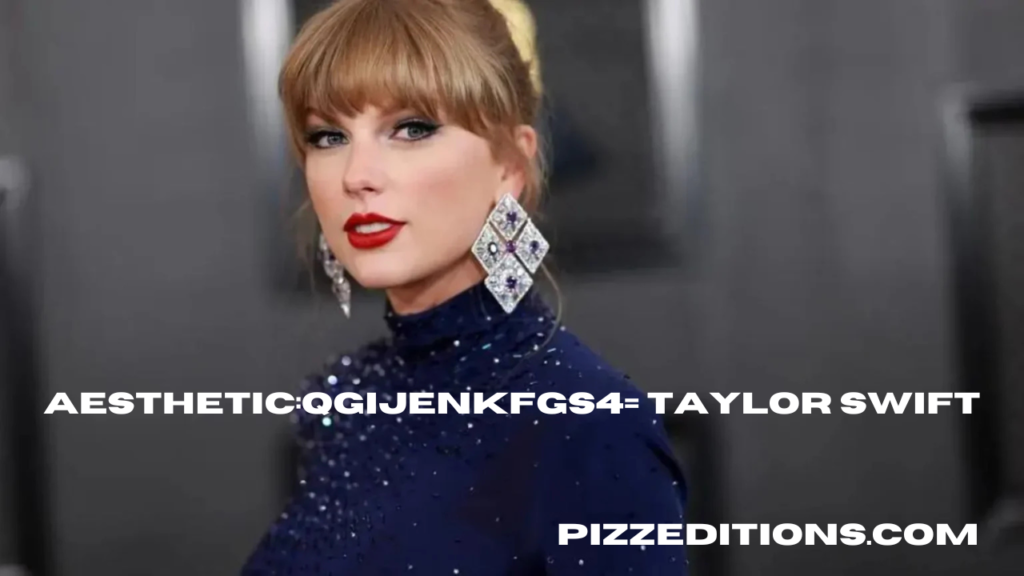Introduction to “aesthetic:qgijenkfgs4= taylor swift”
Taylor Swift has established herself as a multifaceted artist, transforming her image and aesthetic with every album era. From country sweetheart to pop sensation and indie-folk storyteller, her visual and musical evolution has been nothing short of mesmerizing. The phrase “aesthetic:qgijenkfgs4= taylor swift” encapsulates her distinct artistic choices, symbolisms, and transformative storytelling that define her career.
Taylor Swift’s Ever-Evolving Aesthetic
Each Taylor Swift album era is marked by a distinctive aesthetic, reflecting her personal and artistic growth. From the rustic charm of her early country days to the dreamy pastels of Lover and the indie-folk coziness of Folklore and Evermore, her aesthetics are carefully curated.
The Country Fairy Tale Era
Swift’s early years were drenched in a country aesthetic, with soft curls, cowboy boots, and sundresses. The visuals of albums like Taylor Swift (2006) and Fearless (2008) conveyed youthful romance and fairy tale storytelling. Songs like “Love Story” and “You Belong With Me” were accompanied by visuals that resembled classic storybook romances.
Red: A Palette of Passion and Heartbreak
With Red (2012), Taylor introduced a more mature, autumnal aesthetic. The era was characterized by deep reds, vintage sweaters, and nostalgic imagery. Songs like “All Too Well” evoked a bittersweet atmosphere, with visuals capturing warm autumn tones and heartfelt nostalgia.
The Reputation Era: Dark, Edgy, and Rebellious
In contrast, Reputation (2017) embraced a darker, edgier aesthetic. Black leather, snakes, and neon cityscapes reflected the album’s themes of reinvention and self-empowerment. The music videos, like “Look What You Made Me Do,” were filled with bold, cinematic storytelling that showcased a new, more assertive Taylor.
Lover and the Pastel Dream
Swift’s Lover (2019) was a stark departure from Reputation, replacing dark tones with pastel colors, dreamy aesthetics, and whimsical visuals. The era was filled with pinks, blues, and heart-shaped sunglasses, embracing love, freedom, and joy. The music videos, such as “ME!” and “You Need to Calm Down,” exuded a playful, colorful vibrance.
Folklore and Evermore: The Cottagecore Fantasy
In 2020, Taylor surprised fans with Folklore and Evermore, two albums embracing a cottagecore aesthetic. Muted earthy tones, vintage cardigans, and scenic woodland imagery defined this era. The music videos, including “Cardigan” and “Willow,” presented ethereal storytelling, emphasizing nature, introspection, and escapism.
Fashion and Aesthetic Influence
Taylor Swift’s aesthetic isn’t confined to her music; it extends into her fashion and public persona. She has consistently set trends, whether it’s the vintage-inspired looks of 1989, the glittering elegance of Speak Now, or the moody ensembles of Evermore. Her ability to shift aesthetics while maintaining authenticity keeps her audience captivated.
The Emotional Aesthetic Connection
Beyond visuals, the “aesthetic:qgijenkfgs4= taylor swift” concept resonates with fans because of the deep emotional connection she fosters through her storytelling. Her lyrics, combined with carefully curated imagery, evoke a sense of nostalgia, longing, and personal reflection that aligns with each era’s theme.
Conclusion: The Timelessness of Taylor Swift’s Aesthetic
Taylor Swift’s aesthetic evolution is a testament to her artistry and ability to reinvent herself while staying true to her essence. Whether embracing whimsical pastels, dark and edgy motifs, or rustic woodland charm, she continues to define and redefine her visual identity. “aesthetic:qgijenkfgs4= taylor swift” isn’t just a phrase—it’s a journey through the artistic world of one of the most influential musicians of our time.
